2022 Seminars
Managing Photoinduced Electron Transfer in AgInS2-CdS Heterostructures
November 16, 2022
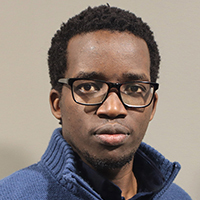
Anthony Kipkorir is a fourth-year graduate student advised by Prashant V. Kamat, the Rev. John A. Zahm Professor of Science in the Department of Chemistry and Biochemistry and Radiation Laboratory. He presented "Managing Photoinduced Electron Transfer in AgInS2-CdS Heterostructures" at the ND Energy PD&GS Seminar in November 2022.
Kipkorir received a 2022 Patrick and Jana Eilers Graduate Student Fellowship for his research focused on designing semiconductor heterostructures for the efficient harvesting of sunlight energy.
“In the wake of climate change due to increasing emission of greenhouse gases, there is a need to find clean and renewable sources of energy,” Kipkorir said. “Solar energy is one alternative that is inexhaustible, clean, and available in most parts of the world.”
Traditionally, silicon-based solar cells are used to harvest sunlight and generate renewable energy. However, silicon is not only an expensive light-harvesting assembly, but it also performs poorly in harvesting low-energy photons in the near Infrared region.
To overcome these downsides of silicon, Kipkorir’s aim is to design Ternary I-II-VI2 semiconductor quantum dots that can harvest a wide spectrum of the sunlight energy. These emerging technologies are cheaper and easier to process relative to silicon.
“For us to better utilize these materials, understanding the efficiency of light energy conversion of solar energy into chemical energy is critical,” Kipkorir said. “Therefore, it is essential to maximize charge separation by suppressing the charge recombination within the semiconductor nanocrystal.”
For Kipkorir, one strategy that has seen tremendous success is merging the semiconductor nanocrystals with redox molecules to facilitate charge separation.
“This approach utilizes charge or energy transfer between the semiconductor systems and redox molecule,” he said. “The charges can thereafter be shuttled for use in photovoltaics or photocatalysis.”
Core facilities on campus have been critical for Kipkorir to conduct his research. At ND Energy’s Materials Characterization Facility (MCF), he has utilized the UV-Visible spectroscopy under the guidance of Laboratory Specialist Anna Matzner.
“Maksym Zhukovskyi of the Notre Dame Integrated Imaging Facility has been instrumental in helping us visualize the quantum dots using Transmission Electron Microscopy (TEM),” Kipkorir said.
He also acknowledges Jon Loftus with the Center for Environmental Science and Technology (CEST) for training and assistance with data acquisition on X-ray Fluorescence detection, which allows for non-destruction compositional analysis of the materials.
Kipkorir earned his Bachelor of Science degree at the University of Nairobi in Kenya, where he credits his second-year environmental chemistry class for informing his research interest in solar energy conversion. Notre Dame’s emphasis on community, along with the impressive track record of the Kamat Lab, drew him to the University to pursue his research interest.
“The supervision of Prof. Prashant Kamat has instilled in me a curious mind,” Kipkorir said. “This simple, but deep question that my supervisor asks often, ‘Why should the scientific community care about your work?’ has helped me research with a purpose.”
Kipkorir looks back to the energy crisis of the 1970’s and believes it should inspire everyone to find a clean and sustainable energy alternative. He is an advocate for creating awareness of what science can accomplish, particularly to the energetic younger generations.
“This research provides fundamentals to the coming, if not yet here, clean energy revolution,” he said.
Plasma-Assisted Approaches for the Direct Conversion of Natural Gas to Value-Added Products
September 21, 2022
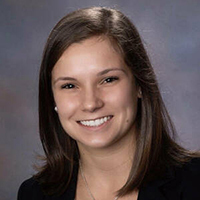
Deanna Poirier is a fourth-year graduate student advised by Jason Hicks, the Tony and Sarah Earley Professor of Energy and the Environment in the Department of Chemical and Biomolecular Engineering. She presented "Plasma-Assisted Approaches for the Direct Conversion of Natural Gas to Value-Added Products" at the ND Energy PD&GS Seminar in September 2022.
Poirier received a 2022 Patrick and Jana Eilers Graduate Student Fellowship for her research focused on upgrading natural gas resources to a variety of valuable products.
“As we work to transition away from petroleum and move toward renewable energy, natural gas upgrading is receiving attention,” Poirier said.
An abundant resource, excess natural gas is often flared, or burned, in a process that is not only wasteful, but also harmful to the environment. The process Poirier is studying could decrease the use of flaring and provide an alternative pathway to synthesize products that typically come from oil.
“To do this in a lab, we use a plasma reactor that creates a highly reactive environment where gases are able to transform into more valuable gas and liquid products,” Poirier explained. Gas phase products, such as ethylene, are important for plastic production, while liquid products, specifically ones that contain carbon and nitrogen, are important in the pharmaceutical and agrochemical industries.
Poirier completed her undergraduate studies in chemical engineering at Worcester Polytechnic Institute in Massachusetts. There she worked on a biomass-related project upgrading ethanol to ethylene for plastic production. She also spent two months at École Nationale Supérieure des Industries Chimiques (ENSIC) in Nancy, France working on a fuel cell project.
“I enjoyed working on projects related to energy and the environment, and I wanted to focus on a similar area at Notre Dame,” she said.
Poirier’s project is a collaborative effort funded by the National Energy and Technology Laboratory (NETL) through the Department of Energy (DOE), involving multiple ND Energy affiliated research groups. In addition to working within the Hicks group, Poirier collaborates with students in the labs of William Schneider, Casey O’Brien, and David Go.
“One person working on their own isn’t going to solve many problems,” Poirier said of collaboration. “Building connections, asking questions, listening to the advice of others, and learning as much as you can from others will make you a stronger researcher able to work on a variety of problems.”
In addition to leveraging the wide-ranging expertise of her collaborators, Poirier has made extensive use of the facilities at Notre Dame to study the liquid products she makes. For example, she utilizes the XPS, PHI VersaProbe II in the Materials Characterization Facility (MCF), as well as various instruments at the Magnetic Resonance Research Center in order to identify functional groups in her products. She has also worked with the Center for Environmental Science and Technology (CEST) and the Notre Dame Mass Spectrometry and Proteomics Facility.
“The staff at these facilities have all been extremely helpful, from training me on new equipment to answering questions about data analysis and suggesting other techniques that would benefit my project,” Poirier said. “The various facilities on campus have been crucial in helping my project to advance.”
In addition to receiving an Eilers Fellowship from ND Energy, Poirier also received an Arthur J. Schmitt Presidential Leadership Fellowship, which is awarded annually by the University to top graduate students in science and engineering, receiving a full-tuition scholarship and annual stipend for five years. She is also involved in departmental activities and helped plan the 2021 Chemical and Biomolecular Engineering Graduate Student Research Symposium, an event that brings in guest speakers and allows students to showcase their research.
Energy Cascading from Perovskite Nanocrystals
September 21, 2022

Jishnudas Chakkamalayath is a fourth-year graduate student advised by Prof. Prashant Kamat in the Department of Chemistry and Biochemistry. He presented "Energy Cascading from Perovskite Nanocrystals" at the ND Energy PD&GS Seminar in September 2022.
Chakkamalayath received the 2022 Forgash Fellowship for Graduate Student Research in Solar Energy for his research focused on metal halide perovskites, materials that are promising for directly converting solar energy into electricity and fuels.
“My research mainly focuses on extending the knowledge from natural photosynthesis and efficiently using the entire solar spectrum for sustainable and renewable energy,” Chakkamalayath said. “We design semiconductor nanostructure assembly to harvest solar energy via light-induced electron and energy transfer processes.”
As the threat of climate change intensifies, so does the global demand for energy. While conventional energy sources contribute to the warming of the planet with large quantities of greenhouse gas emissions, alternative sources can provide a cleaner, more sustainable future. For Chakkamalayath, solar energy is one of the most viable and efficient means for doing this.
“The sun is a free, sustainable, and clean resource that we can use to power our life instead of conventional energy,” Chakkamalayath said. “The world demands for cleaner and renewable energy for sustainable development, and we think solar energy can meet the demands.”
Prior to coming to Notre Dame, Chakkamalayath earned his undergraduate degree in chemistry with a minor in physics at the Indian Institutes of Science Education and Research (IISER).
“The experiences I had there fueled my curiosity about what lay beyond the textbook cognizance,” he said of the research-based institute in Trivandrum, India.
The research facilities offered by Notre Dame aligned well with Chakkamalayath’s interests, and he has made good use of various instrumentation and capabilities on campus. Chakkamalayath utilizes the absorption spectrophotometer in the Materials Characterization Facility (MCF). He also works with Prof. Allen Oliver in the Molecular Structure Facility on X-ray diffraction measurements, and has developed an expertise in transmission electron microscopy at the Notre Dame Imaging Facility (NDIIF).
In choosing Notre Dame, Chakkamalayath was drawn to the faculty expertise on campus and was interested in working with multiple professors. In addition to being advised by Prof. Kamat, Chakkamalayath also collaborates with Prof. Gregory Hartland, professor of chemistry and biochemistry.
“Most of all, the safe working environment and the sense of belonging is why Notre Dame is the right place for me to be doing my research,” Chakkamalayath said.
Outside of his work in the lab, Chakkamalayath serves as an academic affairs chair for the Graduate Student Government to advocate for student academic needs at University-wide forums. He also acts as the treasurer for the Electrochemical Society (ECS) student chapter at Notre Dame.
“Grad life is tough, but the University has helped me a lot in my research life and personal life,” Chakkamalayath said, crediting the opportunity to collaborate with faculty and staff across campus for supporting his research achievements. He also acknowledges the importance of events like the poster session at the annual ND Energy Research Symposium and this seminar experience as ways to improve his public speaking skills and to help him better communicate his research.
“I want to put the skills and knowledge I’ve gained and developed to greater use for society,” he said.
Nanoscale Interactions of Uranyl Peroxide Nanoclusters with Neptunium and Plutonium
March 16, 2022
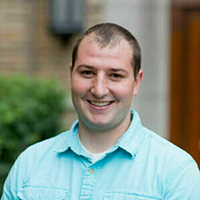
Kyson Smith is a fourth-year graduate student advised by Amy Hixon, associate professor and director of graduate studies in the Department of Civil and Environmental Engineering and Earth Sciences. He presented "Nanoscale Interactions of Uranyl Peroxide Nanoclusters with Neptunium and Plutonium" at the ND Energy PD&GS Seminar in March 2022.
Smith’s research is focused on understanding the behavior of actinide elements. Specifically, he investigates the interactions of uranium clusters with plutonium and neptunium to determine if these clusters might be used for reprocessing used nuclear fuel.
Used nuclear fuel, which has already been irradiated at the power plant, still holds great potential to produce electricity.
“Currently, nuclear fuel only uses about 3-5 percent of its actual energy, meaning that about 95 percent is being put into waste as used fuel,” Smith said. “By reprocessing, we can gain access to much more of that energy.”
In addition to reducing waste, reprocessing used nuclear fuel can provide a more sustainable source of clean energy.
“If these clusters aggregate or encapsulate plutonium and neptunium, they can then be filtered from solution via size filtration,” Smith said. “If these interactions occur, we can use these interactions to reprocess the uranium, neptunium, and plutonium into a mix oxide fuel (MOX) that can then be used again for nuclear fuel.”
Prior to arriving at Notre Dame, Smith earned his bachelor’s degree in geology at Southern Utah University.
“I’ve been interested in geology since a young age,” Smith said. “I’ve always enjoyed being outside and understanding the Earth and how it works.”
While taking an environmental geology course as an undergraduate student, Smith wondered why nuclear energy was not used more in the United States. Upon learning about the research done at Notre Dame on sustainable and secure nuclear, Smith became extremely interested in pursuing the field.
“Since starting the program, the University has provided the resources for me to learn many new laboratory skills and valuable instrumental techniques that will benefit me in the future,” Smith said.
Some of the instrumental techniques Smith has learned on campus are inductively coupled plasma-optical emission spectroscopy (ICP-OES) and Dynamic light scattering (DLS). Additionally, he has spent time at the Advanced Photon Source facility at Argonne National Laboratory in nearby Lemont, Illinois, using the ultra-small and small angle X-ray scattering (USAXS, SAXS) instruments.
Although his future plans are still undecided, Smith is confident the laboratory skills he has developed will make him a better candidate for potential positions in industry or at a national laboratory.
Effects of External Electric Fields on the Glass Transition of Ionic Liquids
March 16, 2022
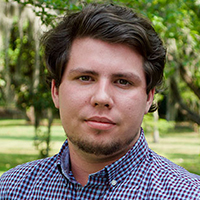
Fernando Javier Carmona is a second-year graduate student co-advised by Yamil Colón, assistant professor, and Edward Maginn, Keough-Hesburgh Professor of Engineering, in the Department of Chemical and Biomolecular Engineering. He presented "Effects of External Electric Fields on the Glass Transition of Ionic Liquids" at the ND Energy PD&GS Seminar in March 2022.
Carmona’s research uses computational techniques to better understand how ionic liquids are affected by external influences to improve our rare earth elements supply.
Using the facilities in the Center for Research Computing (CRC) and Computational Molecular Science and Engineering Laboratory (CoMSEL), Carmona runs virtual experiments to understand new materials that can be used to better process the raw resources used for green technologies and electronics.
“While people are getting electric cars, the batteries and electronics that they use come from mines that are not always ethically sourced,” Carmona said. “There’s a giant push, especially in the Department of Energy, to develop ways to reprocess used waste electronics to harvest those raw materials instead of getting it from those primary sources.”
Carmona earned his bachelor’s degree in chemical engineering at the University of Puerto Rico-Mayaguez. Upon realizing research could be a career path for him, Carmona’s first undergraduate project was determining the feasibility of using sunflowers to generate biodiesel in Puerto Rico. Although he ultimately determined land was too expensive on the island to harvest at that scale, Carmona remained committed to discovering new materials for more sustainable processes.
“I love my technical field, as in thermodynamics, a lot right now,” Carmona said. “But as long as the broader impacts and motivation of my research projects are about getting closer to a more sustainable future, I’m all in.”
Initially, Notre Dame was not on his radar when Carmona was looking for graduate schools. By happenstance, Carmona met Colón when he was at the University of Puerto Rico-Mayaguez promoting Notre Dame’s graduate programs in chemical engineering.
“I was looking for a graduate program that uses data science to do novel material discovery that fits the needs and requirements for our sustainability demands,” Carmona said.
The pairing of Colón and Maginn provides a unique blend of professional development opportunities. Maginn’s extensive experience coupled with the ambitious energy of a young faculty member such as Colón was important to Carmona. He saw the chance to be part of the foundation of the Colón group as one of its first graduate students, while also having the support of a well-established research group with Maginn.
“Their expertise comes in tandem. Prof. Maginn is an expert in ionic liquid simulations and Prof. Colón is an expert in data science applied in chemical engineering,” Carmona said. “In terms of research, this was a very good Venn diagram of both my interests.”
The holistic approach to research taken by his advisors has created an environment in which Carmona can have the confidence in exercising his skills without being afraid to fail.
“The reason why I came here was community, more specifically the research community,” Carmona said. “Here, they value my education just as much as they value my results.”
Carmona is driven by the mission of transitioning communities with fewer resources into a more sustainable and resilient society. He wants to help develop the technology to achieve that goal.
“It all starts with Maria,” Carmona said, referring to the 2017 hurricane that destroyed Puerto Rico’s energy infrastructure. “We don’t have enough resources to do a complete overhaul of the whole infrastructure.”
With more than half of his Ph.D. program ahead of him, Carmona is not exactly sure what role his future holds.
“I just know that if I want to help solve these problems, then there is value in my research,” Carmona said.
Transformations of a Uranyl Hydroxide Phase: Probing Alteration Behavior through High Relative Humidity and Ionizing Radiation
February 16, 2022
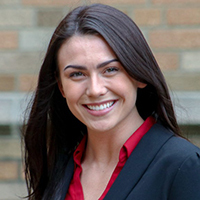
Savannah Benjamin is a fourth-year graduate student advised by Peter C. Burns, Henry J. Massman Professor of Civil and Environmental Engineering and Earth Sciences and director of ND Energy. She presented “Transformations of a Uranyl Hydroxide Phase: Probing Alteration Behavior through High Relative Humidity and Ionizing Radiation” at the ND Energy PD&GS Seminar in February 2022.
Benjamin’s research focuses on the behavior of uranium mineral phases closely associated with the nuclear fuel cycle. A key challenge of ensuring that nuclear energy is feasible for long-term use involves determining how used fuel will age in permanent storage conditions.
“It’s likely that environmental conditions such as high relative humidity and ionizing radiation will impact the chemistry of minerals that are formed from used nuclear fuel,” Benjamin said. “I synthesize the uranium starting material, simulate these conditions in the lab, and characterize the new phases.”
Because her research involves the irradiation of uranium mineral phases, Benjamin collaborates closely with Prof. Jay LaVerne, professional specialist and concurrent professor in the Department of Physics and the Notre Dame Radiation Laboratory, using the particle accelerators in the Nuclear Science Laboratory for this work. Additionally, Benjamin works with instruments in ND Energy’s Materials Characterization Facility (MCF), most notably the High-Resolution X-ray Diffractometer.
“The access to diverse instrumentation is something I try not to take for granted,” Benjamin said. “We are extremely fortunate to conduct our own analyses with so many characterization techniques. Being able to say that you have technical experience in so many areas is valuable to postdoc and industry programs.”
Benjamin earned a bachelor’s degree in chemistry at Middle Tennessee State University. As an undergraduate student, she started out doing research focused on optimizing photovoltaic systems with quantum dots, a research area with applications in solar energy.
“The idea of using my degree for sustainable energy systems was always appealing to me,” Benjamin said. “When I visited Notre Dame and saw that there was a broad dedication to energy research, I got really excited!”
Prof. Burns’ enthusiasm for actinide research and sustainable energy sealed the deal for Benjamin in her decision to choose Notre Dame for her graduate studies. Through her experiences, she has come to realize the importance of working in a collaborative environment with peers and mentors who have similar goals.
“Having the support and encouragement of friends in the program has been vital to my success here,” Benjamin said.
An important lesson Benjamin has learned in graduate school is how to intentionally manage ideas. She credits her peers with varying expertise for offering input and helping her hone her ideas.
“Research is not linear, and it can be easy to follow every lead and go down every rabbit hole,” she said. “I had to learn how to focus my efforts on answering one research question at a time.”
With her research, Benjamin aims to provide fundamental understanding of nuclear materials to help inform public opinion and shape policy.
“I think it’s easy to stigmatize nuclear energy, and there are a lot of myths and untruths that should be dispelled,” Benjamin said. “The hope is that with more information, we will get closer to implementing sustainable energy systems.”
Spacer Cations Dictate Photoinduced Phase Segregation in 2D Mixed Halide Perovskites
January 19, 2022

Preethi Susan Mathew is a fourth-year graduate student advised by Prashant Kamat, the Rev. John A. Zahm Professor of Science in the Department of Chemistry and Biochemistry and the Radiation Laboratory. She presented "Spacer Cations Dictate Photoinduced Phase Segregation in 2D Mixed Halide Perovskites" at the ND Energy PD&GS Seminar in January 2022.
Mathew received a 2021 Patrick and Jana Eilers Graduate Student Fellowship for her research focused on understanding the properties of lead halide perovskites. Due to ease of production, lower costs, and increased efficiency, lead halide perovskites have the potential to be the next generation of commercial solar cells.
Lead halide perovskites can be made to absorb various energies of the visible light spectrum by making use of a combination of halide ions. However, these mixed halide perovskites suffer from a stability issue called halide ion segregation that causes the halide ions to separate.
As a way to mitigate this problem of halide ion segregation, Mathew is looking at a category of lead halide perovskites called two-dimensional (2D) perovskites.
“It was assumed in the perovskite community that any 2D mixed halide perovskite would be stable to halide ion segregation,” Mathew said. “However, my research found that the spacer cation that is used in the 2D perovskite dictates if it will be prone to segregation or not.”
Phase segregation was observed in 2D mixed halide perovskites with the aliphatic cation Butylammonium (BA) under photoirradiation. On the other hand, 2D mixed halide perovskites with aromatic cation Phenethylammonium (PEA) did not undergo phase segregation.
This project was featured on the cover of the July 2021 issue of ACS Energy Letters. You can read the publication here.
Mathew earned an integrated bachelor’s and master’s degree in chemistry at the Indian Institute of Science Education and Research in Thiruvananthapuram, India. Her undergraduate research focused on understanding charge transfer in quantum dots. Mathew’s decision to attend Notre Dame was influenced by her undergraduate research advisor, who had visited campus several times and shared information about the University with her.
“The biggest reason for choosing Notre Dame was the stellar faculty in the chemistry department,” Mathew said, noting that she can troubleshoot research problems with Prof. Kamat or other experts in different fields.
When she got admitted to Notre Dame for graduate school, the Kamat Laboratory was a natural choice.
“I was always interested in the research done in the Kamat Lab, as this group is one of the leaders in photochemistry,” Mathew said. “I used to follow the research that came from this lab.”
In addition to providing support to graduate students through fellowships, seminars, and career development opportunities, Notre Dame is home to all of the facilities that Mathew needs to achieve her research objectives. Within ND Energy’s Materials Characterization Facility (MCF), Mathew has utilized the X-ray Photoelectron Spectroscopy (XPS) and the FTIR. She has collaborated with Ian Lightcap, research and facilities program director, and Anna Matzner, laboratory specialist, to brainstorm ideas.
“The biggest lesson doing research has taught me is that a lot of things can be achieved through collaboration,” Mathew said. “I have been able to use the diversity in expertise we have in our lab to my advantage by having different perspectives about how to approach a research problem.”
Outside of the lab, Mathew annually serves as a judge at the Northern Indiana Regional Science and Engineering Fair (NIRSEF). In 2020, she volunteered on the student committee for organizing the poster session at the 3rd Annual ND Energy Research Symposium. She has also participated in ND Energy outreach activities, such as running a demonstration at Science Alive.
Mathew reviews job documents and provides feedback to other graduate students in a student consultant role with Graduate Career Services. She is also a member of the 2021-22 Leadership Advancing Socially Engaged Research (LASER) cohort, a training and leadership development opportunity for graduate students. Upon her graduation, she intends to build a career as a research scientist in industry.